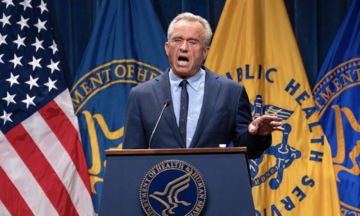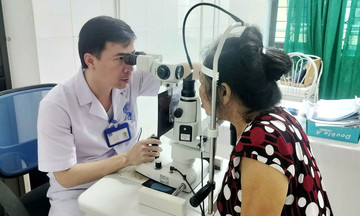According to Dr. Nguyen Minh Hieu from the A9 Emergency Center at Bach Mai Hospital, heat exhaustion and heatstroke are conditions characterized by a disruption in the body's temperature regulation due to prolonged exposure to hot and humid environments, high temperatures, or sudden temperature changes. Without prompt treatment, both conditions can lead to multiple organ failure, liver and kidney damage, and brain injury. Bach Mai Hospital has treated numerous severe cases requiring mechanical ventilation and dialysis for resuscitation.
Mild symptoms include fatigue, thirst, dizziness, rapid heartbeat, shortness of breath, palpitations, and muscle cramps. More severe symptoms can include severe headaches, difficulty breathing, nausea or vomiting, hemiplegia, seizures, loss of consciousness, coma, or cardiovascular collapse.
Heat exhaustion occurs when the body can't dissipate heat quickly enough due to prolonged activity in high temperatures, humidity, poor ventilation, or strenuous physical activity. Heatstroke occurs when direct sunlight exposure to the head and neck disrupts the body's temperature regulation center in the brain. Heatstroke typically develops faster than heat exhaustion.
High-risk groups include children, the elderly, and individuals with chronic or underlying health conditions. Outdoor workers (construction workers, soldiers), athletes, and those working in hot, poorly ventilated environments are also susceptible.
Symptoms of heatstroke and heat exhaustion vary depending on age and severity. Recognizing these conditions in infants and young children is challenging because they cannot articulate their symptoms, which can be easily misdiagnosed. Initial symptoms typically include high fever, followed by dehydration, wrinkled skin, thirst, and increased demand for feeding. In severe cases, seizures and coma can occur.
In older children and adults, common symptoms include high fever exceeding 40°C, vomiting, nausea, dizziness, and lightheadedness. More severe cases can involve altered consciousness, seizures, and coma. Other symptoms include rapid breathing, rapid heartbeat, dry hot skin, and cramps due to dehydration.
"If you experience sudden fatigue, thirst, or nausea in a hot environment, recognize these as early signs of heat exhaustion or heatstroke. Immediately stop your activity, move to a cool place, and rehydrate to prevent more severe symptoms," advises Dr. Hieu.
Even in high humidity with moderate temperatures (around 30°C), strenuous activity can cause heat exhaustion if the body generates more heat than it can dissipate.
 |
To reduce body temperature, apply a cool, damp cloth to the armpits, groin, and neck of someone experiencing heatstroke. Photo: Examiner |
To reduce body temperature, apply a cool, damp cloth to the armpits, groin, and neck of someone experiencing heatstroke. Photo: Examiner
Here are 4 simple steps to treat heatstroke and heat exhaustion:
Immediately remove the person from the hot environment: Move them to a well-ventilated area or an air-conditioned room.
Cool the body: Loosen clothing and apply cool, damp cloths to areas with major blood vessels, such as the neck, armpits, and groin. Use a fan to accelerate heat dissipation.
Rehydrate: If the person is conscious, give them oral rehydration solution (mixed according to instructions), cool water, or fruit juice. If unconscious, place them in the recovery position and immediately call for emergency medical assistance.
Important note: Do not administer fever-reducing medication, ice-cold water, homemade salt solutions, or sports drinks with unknown ingredients. Avoid applying ice packs directly, as this can constrict blood vessels and hinder heat dissipation.
To prevent heatstroke and heat exhaustion, limit prolonged outdoor activity in hot weather, especially during midday. Drink plenty of fluids and electrolytes before, during, and after exercise. Wear loose-fitting, light-colored, breathable clothing, a wide-brimmed hat, and use sunscreen. Consume carbohydrate-rich foods for energy, moderate protein intake, and avoid alcohol, which can dehydrate. Children, the elderly, and individuals with underlying health conditions should ensure adequate hydration, stay in cool environments, and limit outdoor exposure during hot weather.
Le Nga












